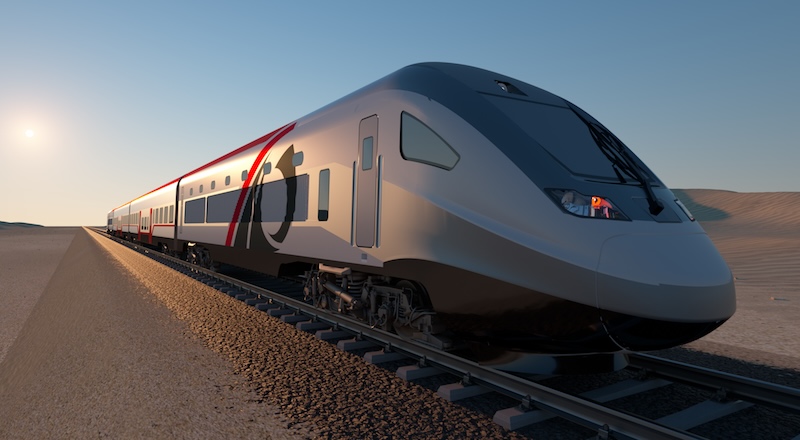The Gulf’s landmark rail project aims to link all six GCC member states by December 2030.
The GCC Railway Project, first approved at the 30th GCC summit in Kuwait City in 2009, will introduce a 2,117-kilometre rail network that connects Bahrain, Kuwait, Oman, Qatar, Saudi Arabia and the UAE. After several postponements from the original 2018 target, the Gulf Railway Authority has confirmed that member states are pressing ahead to meet the revised 2030 deadline. Once complete, the network will transform cross-border travel, streamline logistics and strengthen economic ties between neighbours.
The route at a glance
The alignment is planned to start in Kuwait and run south to Dammam in Saudi Arabia. From Dammam, trains will link directly to Qatar via the Salwa port and onward to Bahrain. Connections from Saudi Arabia into the UAE will serve Abu Dhabi and Al Ain, with onward travel across the seven emirates on Etihad Rail. From the UAE, services are set to continue to Muscat, Oman, via Sohar. To operate seamlessly, all six countries will align safety, environmental and technical standards. Each member state is responsible for building its section of track, stations, branches and freight terminals.

Country by country:
Bahrain
Bahrain will connect to Saudi Arabia via the King Hamad Causeway project. The proposed King Hamad International Station in Ramli will link with Bahrain International Airport and the future Bahrain Metro, then extend to the wider GCC network through Dammam in Saudi Arabia. A new maritime bridge is part of the plan, spanning roughly 25 kilometres with two rail tracks.
Kuwait
Kuwait will anchor the northern section of the GCC Railway. The main central station is planned for Shadadiya, south-west of Kuwait City, on a 111-kilometre line that runs along the coast. Passenger services are expected to operate at speeds of up to 200 kilometres per hour.
Oman
In 2024, Oman Rail and Etihad Rail launched Hafeet Rail, a collaboration that will connect Abu Dhabi with Sohar. The 303-kilometre line is designed for speeds up to 200 kilometres per hour and will integrate more than a dozen passenger stations across both countries, supporting Oman’s link to the broader GCC route.

Qatar
From Qatar, the railway will extend to the UAE via Abu Dhabi and continue to Muscat in Oman. A dedicated maritime bridge will connect Qatar to Dammam in Saudi Arabia, ensuring a direct cross-border link.
Saudi Arabia
Dammam will serve as the central hub for Saudi Arabia’s part of the network, receiving trains from Kuwait and distributing services to Bahrain and Qatar via two maritime bridges. From Dammam, travellers can continue to Riyadh and across the national rail system.
United Arab Emirates
The UAE’s Etihad Rail is slated to launch passenger services in 2026 on a 900-kilometre network connecting cities across all seven emirates. The first passenger station is planned for Sakamkam in Fujairah, creating a strategic gateway for future GCC services.

As momentum builds, the GCC Railway promises a new era of regional mobility, enabling residents and visitors to travel with ease between capitals and coastal hubs, while opening up new opportunities for commerce and tourism.
GO: Visit www.etihadrail.ae for more information.


